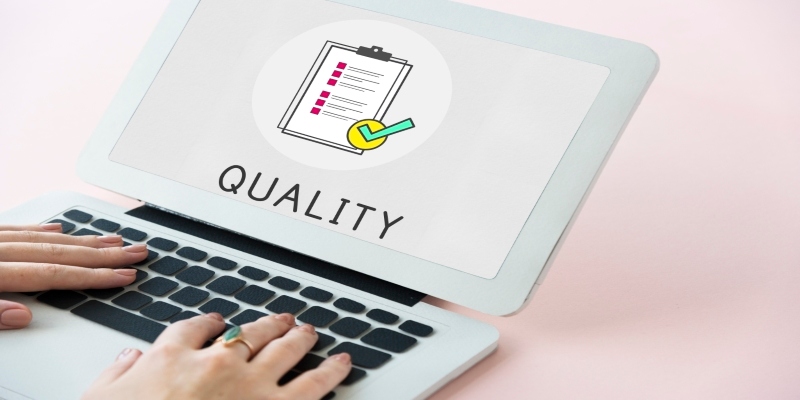Deciphering Acceptable Quality Level (AQL): A Straightforward Insight
Dec 20, 2023 By Triston Martin
Have you ever found yourself pondering over how companies guarantee the quality of the products you purchase? The answer lies in a critical tool known as the Acceptable Quality Level, or AQL for short. Now, AQL might initially sound a bit intimidating, but fear not! We're here to demystify it for you in the most straightforward way possible.
In the following paragraphs, we'll delve into the very essence of AQL, comprehending what it stands for, uncovering its inner workings, and discovering precisely why it serves as a linchpin in upholding the quality of products we all rely on.
What is an Acceptable Quality Level (AQL)?
At its core, Acceptable Quality Level, abbreviated as AQL, stands as a pivotal cornerstone within the realm of quality control. Think of it as a meticulously crafted framework akin to a set of guidelines or benchmarks that conscientious companies adhere to religiously. v
These guidelines act as the custodians of product quality, ensuring that the items rolling off the assembly line adhere to stringent quality criteria. In simpler terms, AQL functions as a guardian angel for businesses, steadfastly upholding the banner of uniform quality.

How Does AQL Work?
Now that we know what AQL is let's dive into how it works. Imagine a company that manufactures sneakers. They can't check every single pair for defects because that would be too time-consuming and costly. So, they take a sample from the production line and inspect it.
This sample represents a small portion of the entire batch, and it's chosen randomly to ensure fairness. The number of items in the sample and the criteria for accepting or rejecting it are determined by AQL standards.
Here's where the AQL comes into play. It sets the acceptable quality limits. Two main factors define these limits:
- The Acceptable Quality Level itself is a percentage. For example, if the AQL is set at 2%, it means that the company can tolerate up to 2% of the items in the sample being defective.
- The confidence level indicates the level of certainty the company wants to achieve. Common confidence levels are 95% and 99%.
Let's break it down with a practical example. Suppose our sneaker company decides on an AQL of 2% with a 95% confidence level. In that case, it means they're willing to accept that, on average, 2% of the sneakers in their production batch may be defective, and they're 95% confident that this is an accurate representation of the whole batch.
If the sample falls within the acceptable quality limits (in this case, 2% defective items), the entire production batch is considered acceptable and can proceed to market. If the sample exceeds the AQL, the batch may need further inspection or even rejection.
Why is AQL Important?
Now that we understand how AQL works, you might be wondering why it's so important. Well, here are a few reasons:
Ensures Consistency: AQL is the guardian of consistency in the world of quality control. It establishes a steadfast benchmark that must be upheld, guaranteeing that each time a customer makes a purchase, they receive products that align with their expectations. The essence of AQL lies in making sure that the quality of goods remains unwavering, creating a sense of trust between companies and consumers.
Reduces Costs: The alternative of scrutinizing every single item for imperfections is a costly and time-draining endeavor. AQL, on the other hand, allows companies to judiciously inspect a smaller, randomly selected sample from the batch. This approach effectively trims inspection expenses while preserving the desired level of quality.
Saves Time: AQL is like a time wizard for the quality control process. Rather than painstakingly scrutinizing each item, companies can swiftly assess a sample. This acceleration in the evaluation process translates to products reaching the market more expeditiously and meeting consumer demands promptly.
Customer Satisfaction: The ultimate aim of AQL is to bestow customers with products that not only meet but exceed their quality expectations. When this goal is achieved, customer satisfaction soars, fostering loyalty and turning one-time buyers into steadfast patrons.
Compliance: In various industries, adherence to AQL standards is not just a suggestion; it's a legal necessity. Companies must rigorously follow these standards to ensure their products align with the stringent requirements of safety and quality regulations. This adherence is not just good practice; it's the law.
Setting AQL Standards
Setting AQL standards is a critical part of the quality control process. Companies must carefully consider their industry, the type of product they're manufacturing, and customer expectations when determining the Acceptable Quality Level.

Here's how they do it:
Industry Regulations: In some industries, regulatory bodies specify AQL standards that companies must adhere to. These regulations are put in place to ensure consumer safety and product quality.
Customer Expectations: Companies also consider what their customers expect in terms of quality. For example, a high-end jewelry brand may have stricter AQL standards than a budget-friendly clothing retailer.
Product Complexity: The complexity of the product plays a role in determining AQL standards. A highly technical product may require tighter quality controls than a simple one.
Risk Assessment: Companies assess the risks associated with product defects. Products with safety concerns or high potential for harm may have stricter AQL standards.
Conclusion
Within the realm of quality control, Acceptable Quality Level (AQL) stands as a pivotal instrument, assuring that products align with precise quality benchmarks. This streamlined approach simplifies the intricate quality assessment process by enabling companies to sample a segment of their production batches.
These sampled items are subjected to rigorous evaluation, and their quality conforms to limits established by industry norms, customer anticipations, and risk evaluations. Consequently, AQL champions consistency and elevates customer contentment. Moreover, it acts as a cost-efficient ally, curtailing expenses linked with exhaustive inspections.





